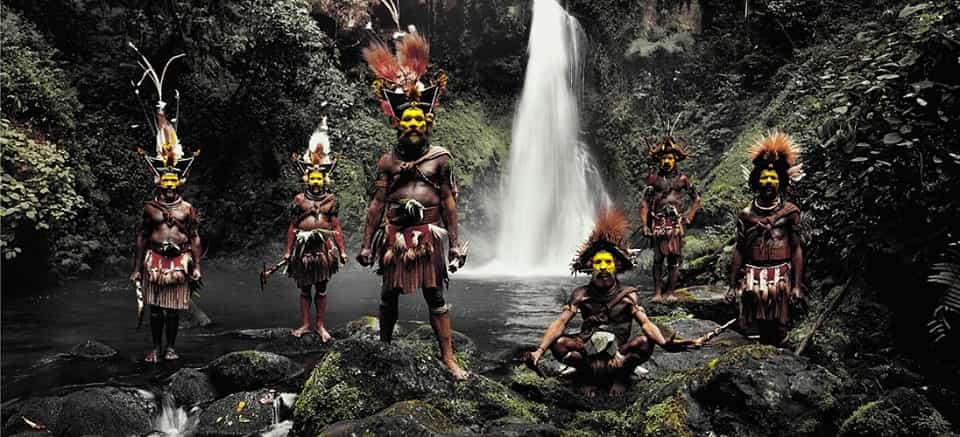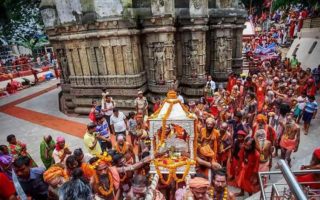Indian is a land of rich cultural heritage and glorious past. It also has some early civilizations in the world like Indus Valley civilization that dates back to 3000 BCE. Ruled by various kingdoms or rulers, the entire country famous for its unique imprints and rich legacy. Further, in terms of the World Heritage Sites India has its own significance like all other countries in the World.
Besides that, some of the heritage sites also included in the list of monuments in India that provides you with a glimpse of its rich heritage and culture. According to the latest update, there are about 35 UNESCO World Heritage Sites in India. Hence it is a great site to behold for all archaeologists, historians, and art lovers. Check the list of all world famous heritage sites to visit in India with detailed information.
Cultural Heritage Sites in India
Khajuraho Group of Monuments – Madhya Pradesh
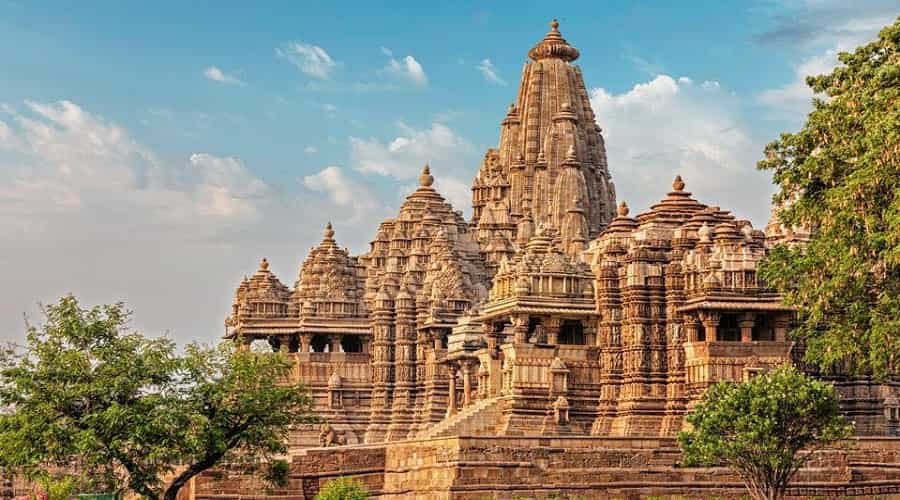
One of the Unique Heritage Sites in India, Khajuraho is famous Worldwide for its Group of Hindu and Jain Temples. These Temples are known for the Great Nagara Style Architecture having Erotic Sculptures and Figures carved on them. All these Erotic Poses and Postures depicts their story back from the Ancient Indian Erotica – The Kamasutra.
The Site consists of a total of 85 Temples and Monuments, which were built near about 1050 CE by the Chandela Dynasty. Khajuraho is a popular Hot Spot for Historians and Architects from all around the Globe and holds a special place in Indian Heritage.
Important Monuments at Khajuraho – Kandariya Mahadeva Temple, Lakshmana Temple, Vamana Temple, Brahma Temple, Dulhadev Temple, Javeri Temple, Viswanath Temple, Ruins of Ghantai Temple
Red Fort Complex – Delhi
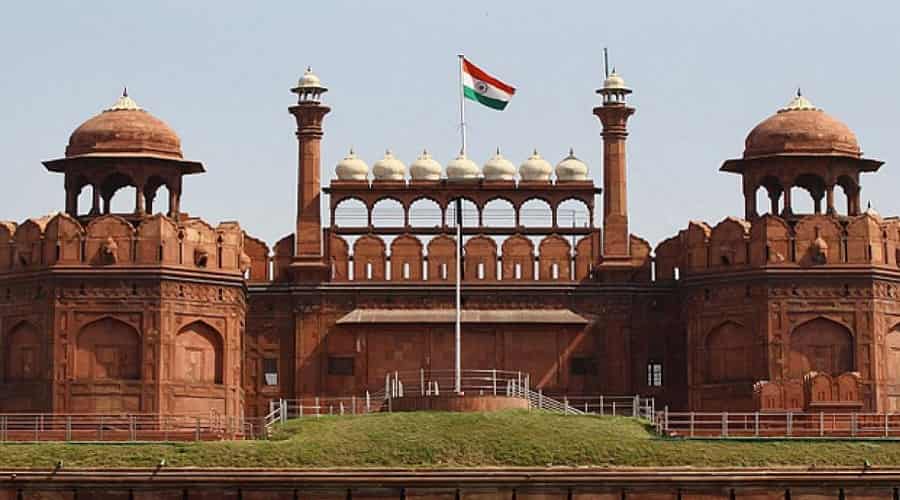
Also Known as Lal Qila, this Architectural Gem was built by Mughal Emperor Shahjahan in the 17th Century. The Fort is built completely with Red Sand Stones and represents the Glory of Mughals and their Unique Architectural Creativity.
The whole Fort Complex is a blend of different styles of Architecture, mainly the Indo-Islamic, Hindu, Timurid and Persian Architecture. Red Fort is one of the most important World Heritage Sites in India and one of the main Places to visit in Delhi.
Important Monuments in Red Fort Complex – Lahori Gate, Delhi Gate, Chhatta Chowk, Naubat Khana, Diwan-i-Aam, Mumtaz Mahal, Rang Mahal, Diwan-i-Khas, Moti Masjid, Hira Mahal, Hayat Bakhsh Bagh and Hammam.
Jantar Mantar – Jaipur, Rajasthan
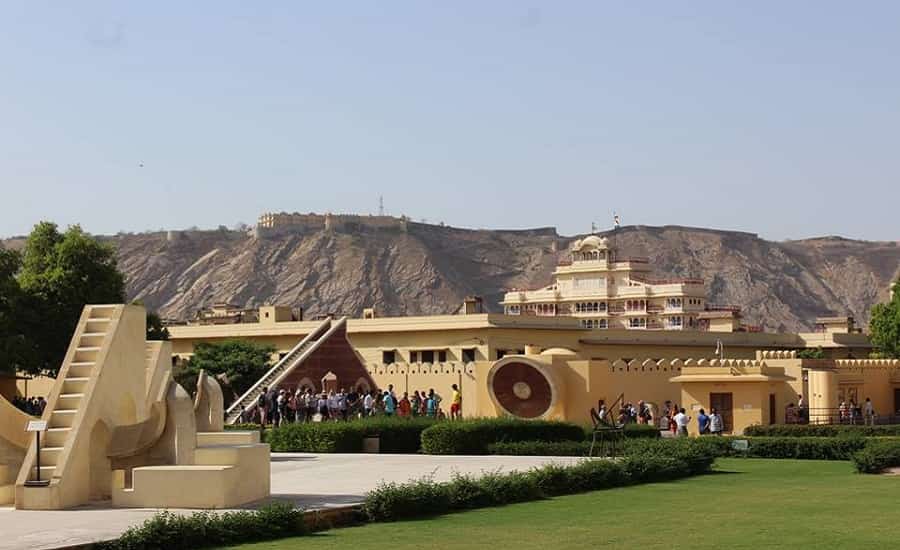
Built around the 18th century by the king of Sawai Jai Singh as an astronomical observatory to trace the movement of the sun and predict the time. All these astronomical instruments made up of sandstone and plaster of Paris. Therefore, it is considered to be the world’s largest stone Sundial. Further, these instruments still in working condition that helps you to find out the exact location of the moon, sun and other celestial bodies within the given time.
Important Monuments/Instruments at Jantar Mantar – Disha Yantra, Jai Prakash Yantra, Chakra Yantra, Dakshin Bhitti Yantra, Digamsha Yantra, Kapali Yantra, Kanali Yantra, Rashi Valaya Yantra, Rama Yantra and Kranti Yantra.
- Also Read: Places to visit in Delhi
Qutub Minar Complex – New Delhi
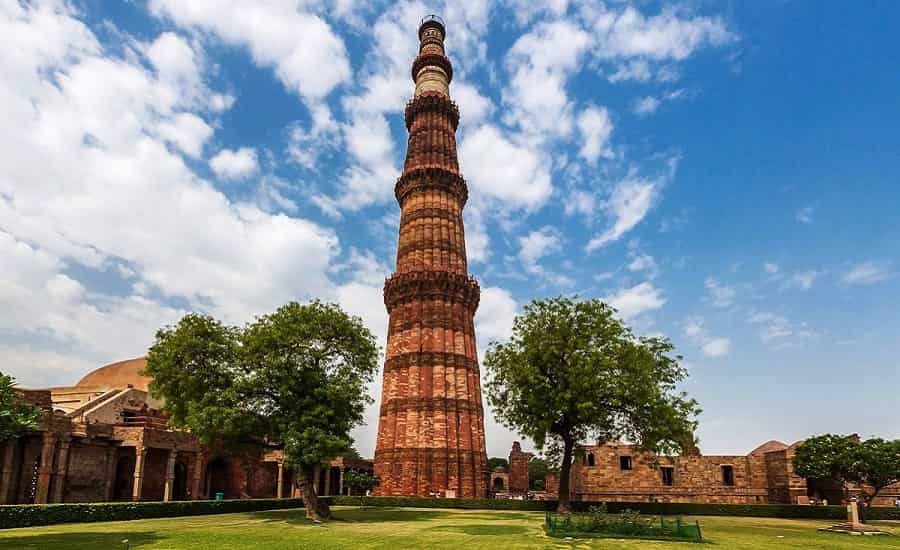
The Qutub Minar Complex is an important World Heritage Site situated in the Mehrauli region of Delhi. The major attraction of this complex is Qutub Minar, which is a 244 Feet Tall Minaret made of Marble and Red Stand Stone. The Minar was Built by Qutb ud-Din Aibak to honor the popular Sufi saint – Qutbuddin Bakhtiar Kaki. The Qutub Minar Complex is a Popular Tourist Destination of India and an important Site depicting the Cultural Heritage of India. Several other impressive structures like the famous Iron Pillar and Alia Minar (a half-constructed replica of Qutub Minar) make it one of the Top World Heritage Sites in India.
Important Monuments at Qutub Minar Complex – Quwwat-ul-Islam Mosque, Alai Minar, Alai Gate, The Ruins of Several Jain Temples, The Iron Pillar and the Tombs of Alauddin Khilji, Iltutmish, and Imam Zamin.
Group of Monuments, Mahabalipuram – Tamil Nadu
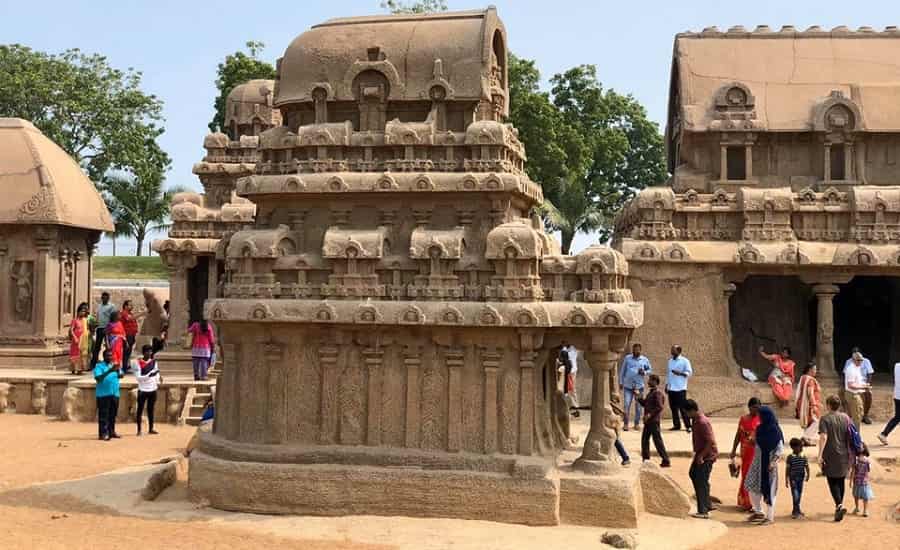
Located on the Coromandel Coast of Bay of Bengal, Mahabalipuram is a Cultural Heritage Site popular for its Shore Temple, many Cave Temples, Chariot temples, Largest Open Air Rock Relief and the Pallava Dynasty Architecture. The Ratha Architecture, Stone Carved Structures, and Rock Paintings are some main attractions of this Heritage Site. Mahabalipuram is one of the Best Weekend Getaways from Chennai on a distance of 58 km approximately.
Important Monuments at Mahabalipuram – Shore Temple, Rock Relief, Dharmaraja Ratha, Bhima Ratha, Arjuna Ratha, Draupadi Ratha, Ganesha Ratha, Varaha Cave Temple, Panchapandava cave temple, Krishna Cave Temple, and Mahishasuramardini Mandapa.
Buddhist Monuments at Sanchi, Madhya Pradesh
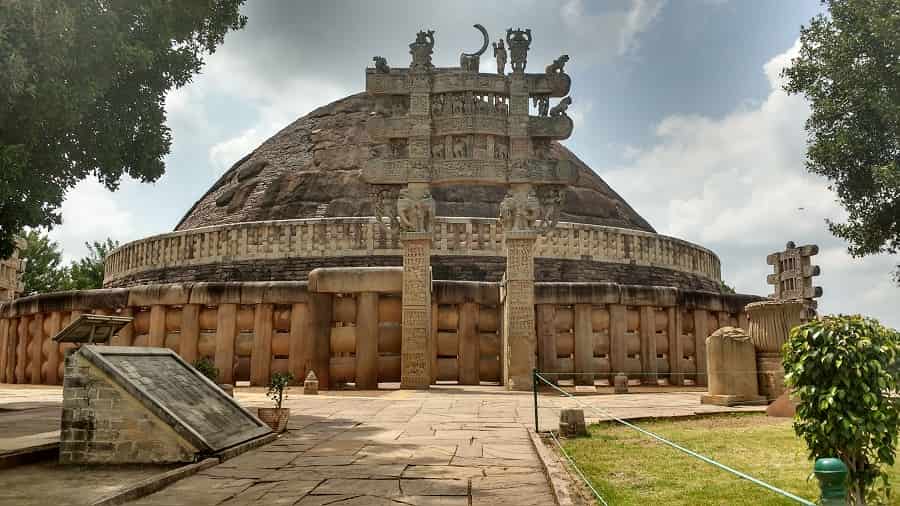
Buddhist Complex at Sanchi is famous for the Great Stupa situated on a Hilltop of Sanchi Town. The Site is a popular Buddhist Tourist Attraction in India and is considered as Oldest Stone Structures of India. The Sanchi Stupa was built by Emperor Ashoka in the 3rd century BCE and its nucleus was a Hemispherical Brick Structure which was built over the Relics of Buddha. The other Monuments of Sanchi include the Temples, Monasteries and Monolithic Pillars.
Churches and Convents of Goa – Old Goa
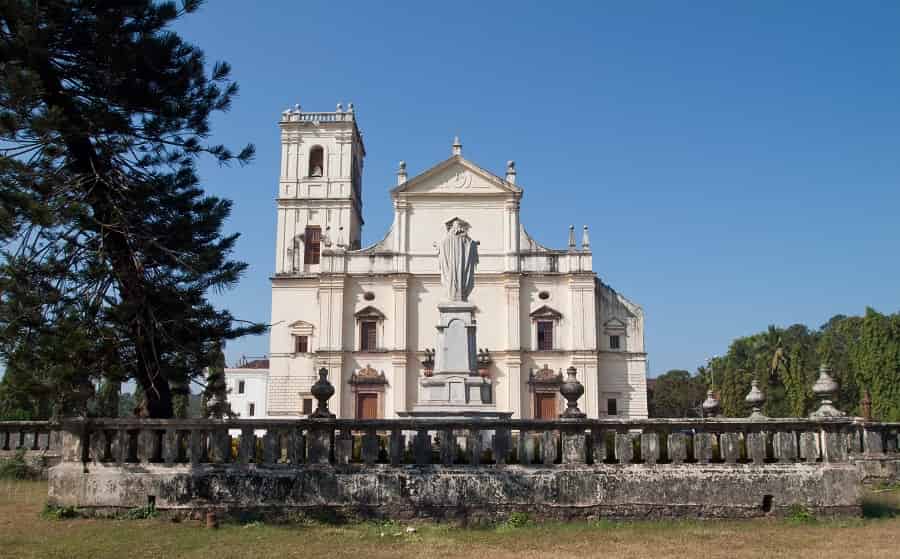
In the 15th and 16th Centuries, the Portuguese came to India and establish themselves on the Konkan Coast of India, mainly in Goa. They built several Churches and Convents in Goa in order to Promote and Spread Christianity in India. All these Churches and Convents are then added to the list of World Heritage Sites due to their Diverse and Beautiful Portuguese Style of Architecture.
Churches and Convents of Goa – Basilica of Bom Jesus, Se Cathedral, Church of St. Francis of Assisi, Church of St. Cajetan, Church of St. Augustine, Church of Lady of Rosary.
Champaner-Pavagadh Archeological Park – Gujarat
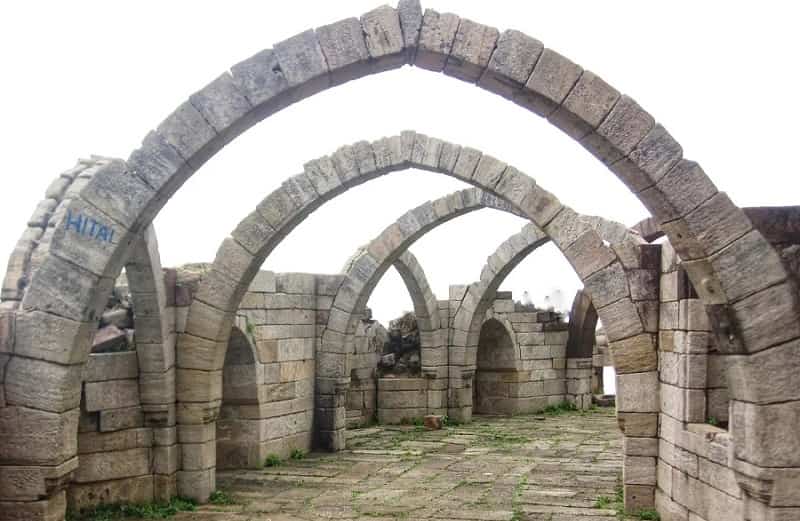
Located near the Historic City of Champaner in Panchmahal district of Gujarat, the Champaner-Pavagadh Archeological Park is one of the most Popular Places to visit in Gujarat. This Heritage Site is Dotted with Temples, Palaces, Tombs, Mosques, Fortresses and Walls, Stepwells, Arches and Entrance Gates.
The Site spreads from the Hills of Pavagadh to the City of Champaner and the major Attractions includes Historical, Archeological, and Living Cultural Heritage Monuments. A Temple is located at the height of 2,600 feet on Pavagadh Hill, which is an important Hindu Shrine and attracts a large number of Pilgrims every Year.
Important Monuments at Champaner-Pavagadh Archeological Park – Jama Masjid, Kevda Masjid, Lakulisa Temple, Kalika Mata Temple, Pavagadh Fort, Helical Stepwell, Citadel Walls and Kabutarkhana Pavilion.
Konark Sun Temple – Odisha
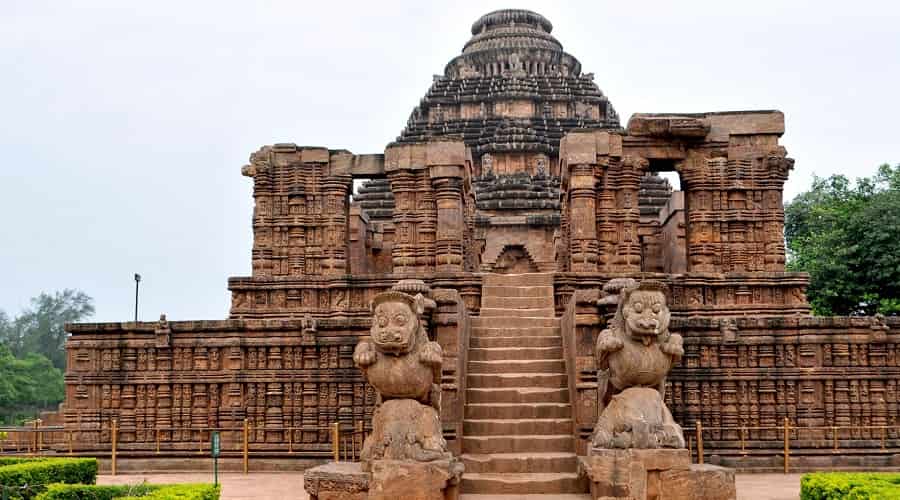
One of the Most Popular Temples in India, Konark Sun Temple is a UNESCO World Heritage Site located 35 km from Puri, Odisha. Built in the form of Gigantic Ornamental Chariot of Surya – The Sun God, Konark Temple is an excellent piece of Ancient Kalinga Architecture. The Marvelously Carved Stone Wheels, Walls, and Pillars are led by 6 elaborately carved Stone Horses. The Stone Wheels of the Temple are Sundials that can Calculate Time as accurate to a minute. Konark Sun Temple is one of the Most Popular Heritage Sites in India and also holds a place in the list of Seven Wonders of India.
Group of Monuments at Pattadakal – Karnataka
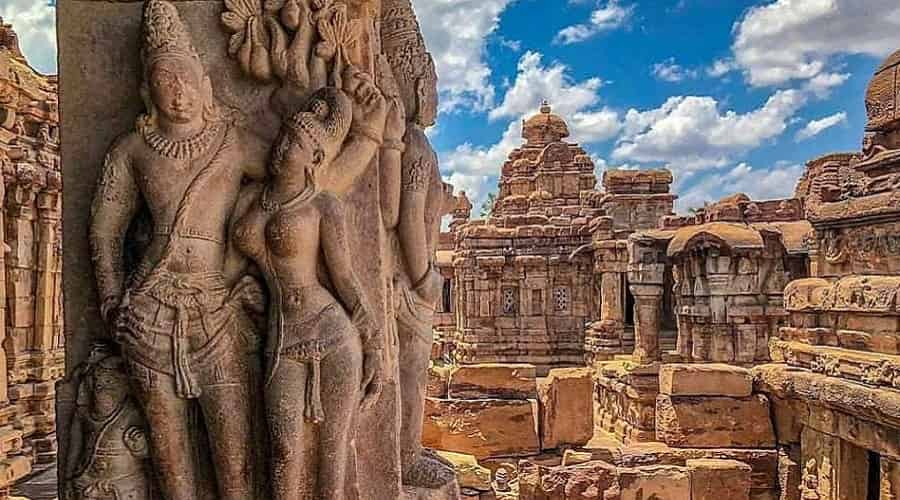
Pattadakal is a popular Tourist place in Karnataka and a UNESCO Heritage Site famous for its Hindu and Jain Temples built in 7th and 8th Century. Located on the banks of the Malaprabha River in Bagalkot, this Heritage Site features many Historical monuments built in different styles of Architecture notably The Chalukya Architecture, The Nagara Architecture and The Dravidian Architecture.
Important Monuments at Pattadakal – Sangameshwara Temple, Mallikarjuna Temple, Chandrasekhara Temple, Virupaksha Temple, Galaganatha Temple and the Kashi Vishwanath Temple.
Rani Ki Vav, Patan – Gujarat
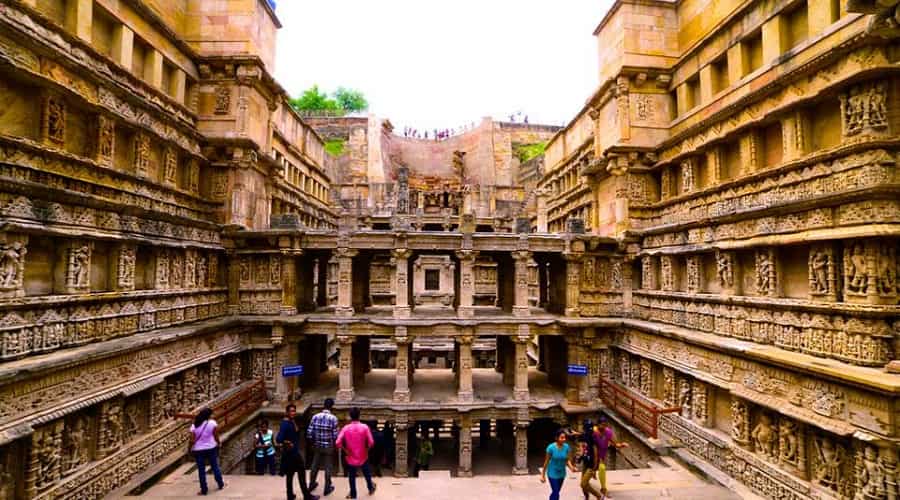
Built in complex Maru-Gurjara Architecture, Rani Ki Vav (Queen’s Step Well) is an Intricately Designed Stepwell in Patan district of Gujarat. Constructed during the period of Chalukya Dynasty, the Step well has Seven levels of Stairs and an Inverted Temple along with more than 500 beautifully carved Sculptures. Apart from the Historical importance, Rani Ki Vav also holds Religious importance which can be found in the Stone Carving on the walls and Mythological Art on the Sculptures inside the Well. Rani ki Vav was added to UNESCO World Heritage Sites list on June 2014 and also acquire the Title of “Cleanest Iconic Place in India” in 2016.
Group of Monuments at Hampi – Karnataka
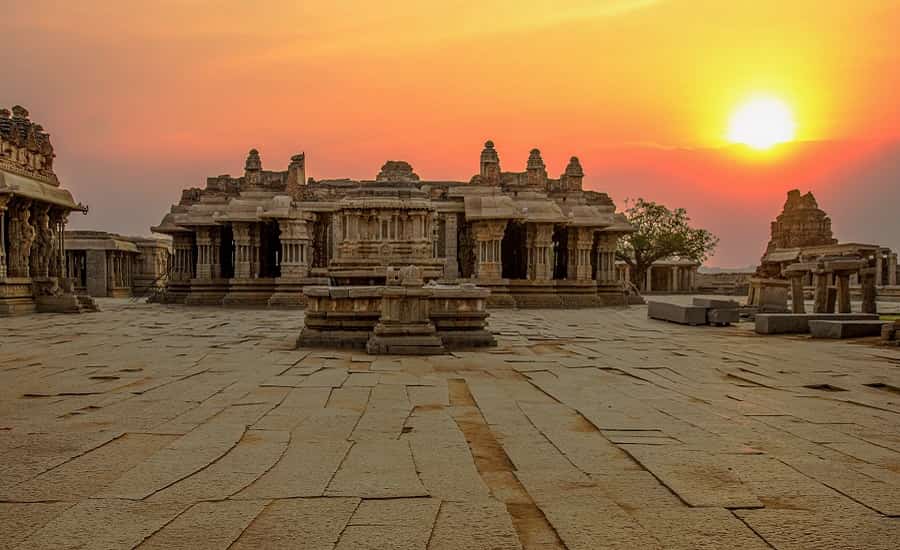
Once the capital of Vijayanagara Empire, Hampi is now a City of Ruins swarmed by Tourists from around the Globe. Hampi is an important UNESCO World Heritage Site in India showing Strong Influences of the Dravidian Style of Architecture. There are Several Monuments in this Heritage Site among which the Virupaksha Temple is the most Popular one and also a significant religious center for Hindus. The city is situated on the Banks of Tungabhadra River, which offers an astonishing Backdrop to this place.
Important Monuments at Hampi – Virupaksha Temple, Vitthala Temple Complex, Achyutaraya Temple Complex, Krishna Temple Complex, Lotus Mahal and Jain Temple.
- Must Read: Heritage Sites in Karnataka
Dholavira, Gujarat
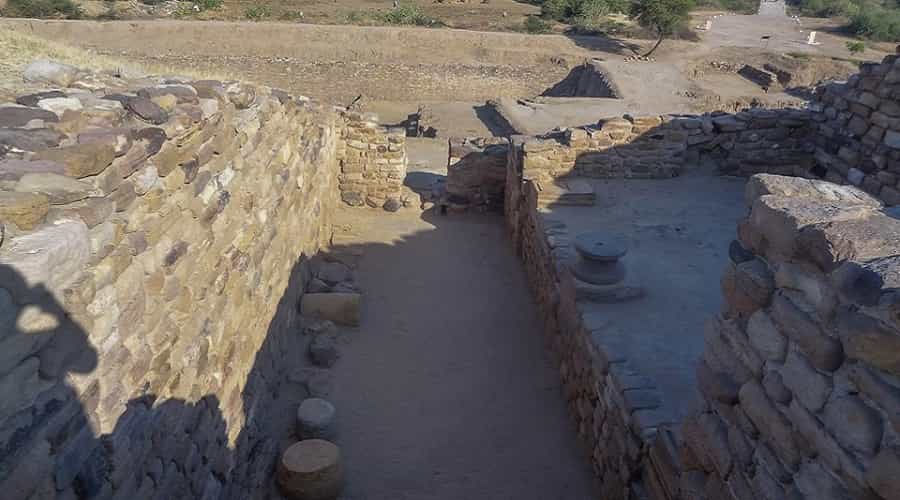
Dholavira is an archaeological site located in the Khadirbet in Bhachau Taluka of Kutch District, in the Indian state of Gujarat. It was an ancient Indus Valley Civilization settlement that flourished between 2650 BCE and 1900 BCE. It is known for its well-planned layout, large water storage systems, and impressive structures like the Great Bath, the Castle, and the Middle Town. Dholavira is considered one of the largest and most remarkable sites of the Indus Valley Civilization.
The Historic City of Ahmedabad
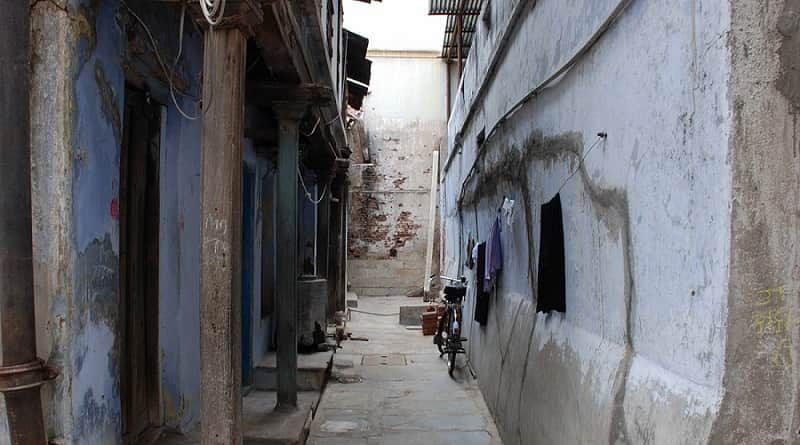
The Historic City of Ahmedabad, in the Indian state of Gujarat, is a UNESCO World Heritage site recognized for its rich cultural heritage and well-preserved historic architecture. It was founded in the 15th century by Sultan Ahmed Shah and served as the capital of the Sultanate of Gujarat for six centuries. The city is known for its intricate carvings, wooden balconies, and Hindu and Jain temples, as well as its many monuments, including the Jami Masjid mosque, the Sabarmati Ashram, and the Calico Museum of Textiles. The city is an example of a unique architectural and cultural fusion, reflecting the Islamic, Hindu and Jain traditions.
The Victorian and Art Deco Ensemble of Mumbai
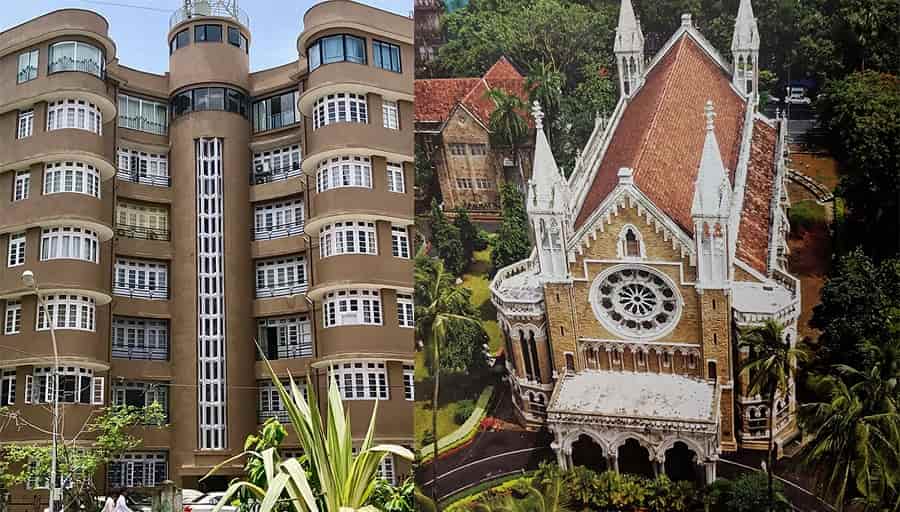
The Victorian and Art Deco Ensemble of Mumbai is a group of buildings located in the Fort and Marine Drive areas of Mumbai, India. The ensemble consists of Victorian Neo-Gothic and Indo-Saracenic buildings, as well as Art Deco structures, built between the late 19th and mid-20th centuries. The buildings are notable for their unique architectural styles, which are a mix of Indian and European influences. The ensemble includes some of Mumbai’s most iconic buildings, such as the Chhatrapati Shivaji Terminus (previously known as Victoria Terminus), the Mumbai High Court, and the Royal Opera. This ensemble is a testimony to the city’s colonial history and its cultural diversity, and represents an important aspect of Mumbai’s architectural and cultural heritage.
The Pink City – Jaipur
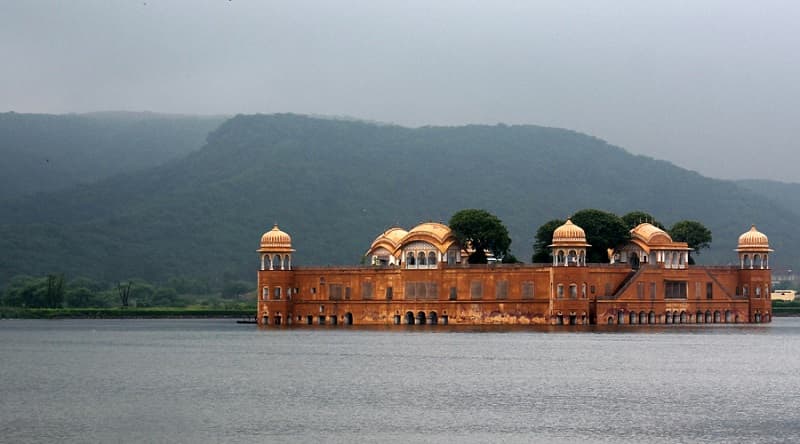
The Pink City, Jaipur, is a historic city located in the Indian state of Rajasthan. It is named after the dominant color of its buildings, which were painted pink in 1876 to welcome the Prince of Wales. Jaipur was founded in 1727 and served as the capital of the Rajput kingdom of Jaipur. The city is famous for its well-preserved old town, which is surrounded by a fortified wall, and its many historical monuments, including the Hawa Mahal palace, the City Palace, and the Jantar Mantar astronomical observatory. The city is also known for its bazaars, which sell traditional textiles, jewelry, and handicrafts, and for its vibrant street life. Jaipur is considered one of the finest examples of Rajput architecture and town planning and is an important part of India’s cultural heritage.
Kakatiya Rudreshwara Temple
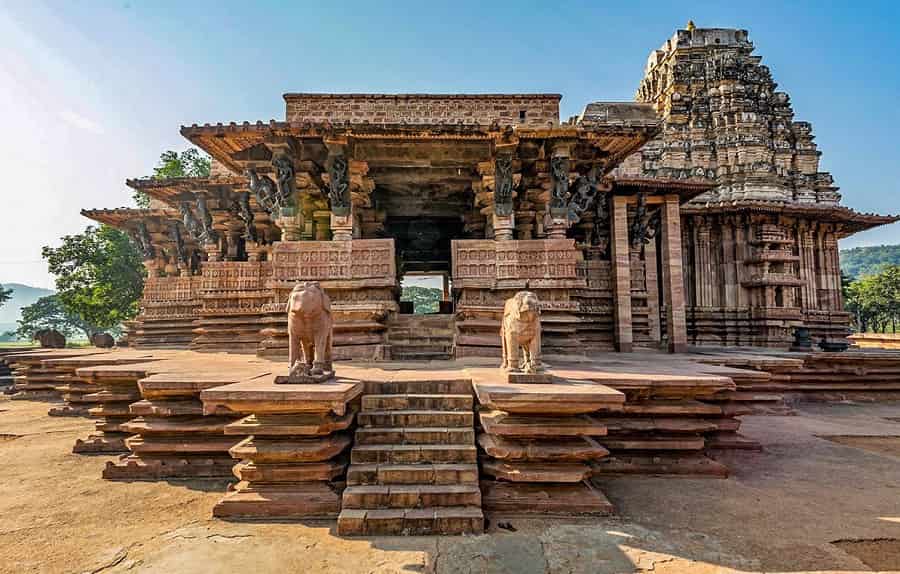
The Kakatiya Rudreshwara Temple is a Hindu temple dedicated to Lord Shiva, located in the Warangal district of Telangana, India. It was built during the reign of the Kakatiya dynasty in the 13th century. The temple is known for its architectural style, which is a blend of South Indian and North Indian styles. The main shrine of the temple houses a linga, which is a symbol of Lord Shiva. The temple is also known for its intricate carvings and sculptures, which depict various Hindu gods and legends.
Hill Forts of Rajasthan
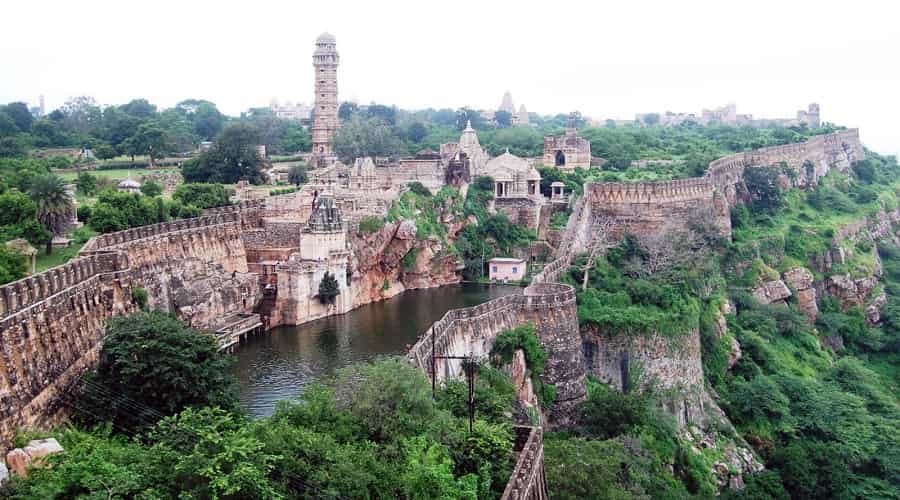
If you want to witness the Royal Side of India, the best way is visiting the numerous Forts and Palaces in Rajasthan. Hill Forts of Rajasthan are a group of 6 Magnificent Forts standing on the Hilltops of Majestic Aravalli Mountain Range. These Forts are famous for the Military Style Defense Architecture of Rajputana Kingdom includes Ranthambore Fort, Jaisalmer Fort, Amber Fort, Gagron Fort and Forts of Chittorgarh and Kumbhalgarh. All these masterpieces of Great Rajputana Architecture represent the extreme strength of the Rajputana Kingdom in India. The Heritage Site is spread over a great expanse and offers Majestic views of the Aravalli Hills and nearby places.
Bhimbetka Rock Shelters – Madhya Pradesh
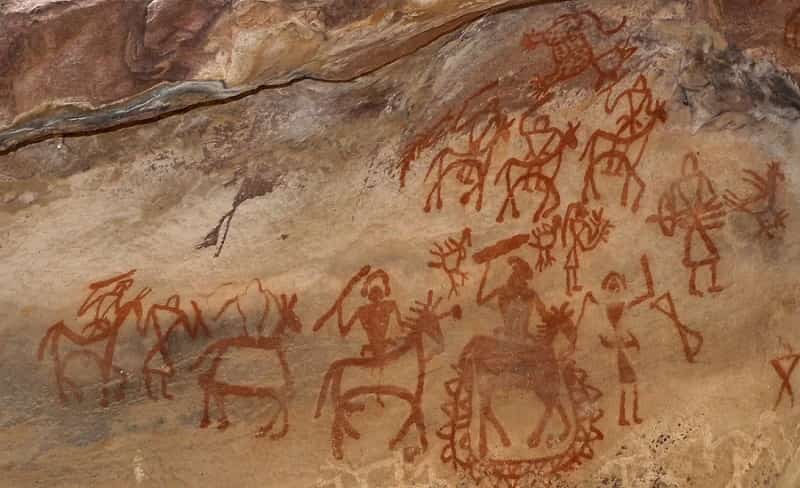
The Rock Shelters of Bhimbetka are an Archeological Heritage Site which showcases the earliest traces of Human Life in the Indian Subcontinent and the beginning of Stone Age in India. Located inside the Ratapani Wildlife Sanctuary in Raisen District of Madhya Pradesh, these Shelters are famous for its Rock Art and Cave Paintings which are considered to be 30,000 years old.
The whole area is located in the Southern part of Vindhya Hills and blessed with Natural Beauty and rich Flora and Fauna. Exhibiting the Cultures from Paleolithic to Historic Period, these Cave Paintings depict the Hunting Style, Day to Day Activities and Survival of Human Life over the Centuries.
Taj Mahal, Agra – Uttar Pradesh
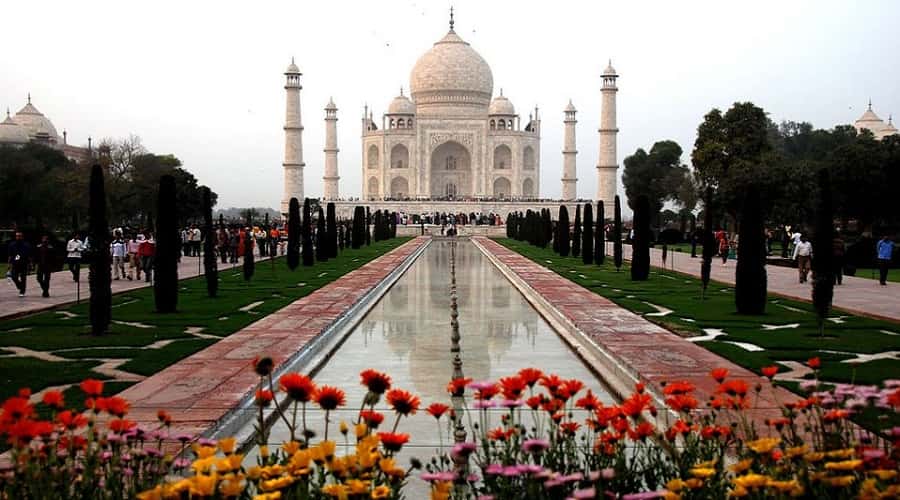
Taj Mahal is a Beautiful Historical Monument, which is often referred to as – The Symbol of Love. This Spectacular Masterpiece of Mughal Architecture was built by Shahjahan in the fond memory of his Beloved Wife Mumtaz Mahal. Taj Mahal is considered as the finest example of Mughal Art and Architecture in India and frequented by Tourists from all over the World. It is a Domed Shape Monument made with White Marbles that also holds a place in the list of New Seven Wonders of Words.
The Beautiful Mausoleum of Mumtaz Mahal is surrounded by many other impressive structures like the Great Gate, Mosque, and Mughal Garden. Undoubtedly, this “Jewel of Muslim Art in India” is one of the major Historical Places in India.
- Also Read: the best places to visit in Agra
Humayun’s Tomb – New Delhi
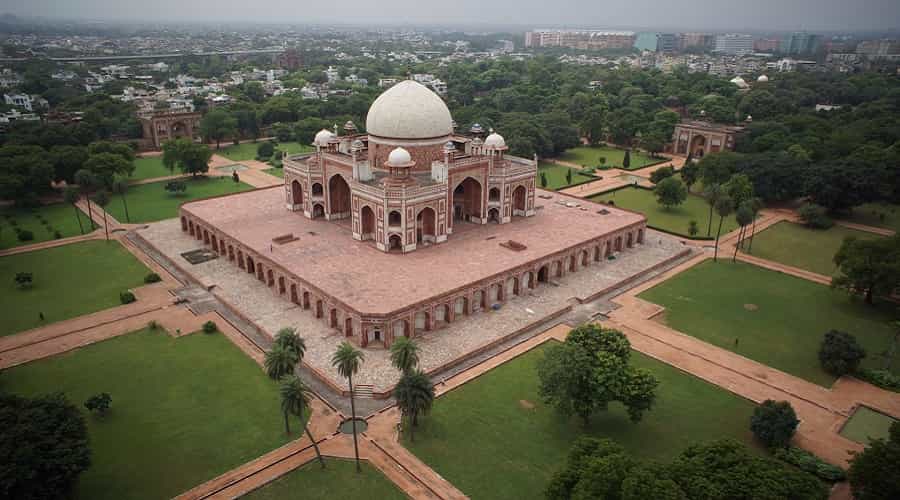
One of the Best Places to visit in Delhi, Humayun’s Tomb is a perfect example of Persian and Central Asian Style of Islamic Architecture in India. Built in 1565-1571 by the First Wife of Humayun – Empress Bega Begum, the monument undergoes many restorations works till its completion.
The Beautiful Tomb is bordered by Beautiful Gardens and some very Beautiful Monuments and Structures.
Important Monuments in Humayun’s Tomb – Mosque and Tomb of Isa Khan, Afsarwala Mosque and Tomb, Arab Sarai, Nila Gumbad, Chilla Nizamuddin Auliya and Barber’s Tomb.
Great Living Chola Temples – Tamil Nadu
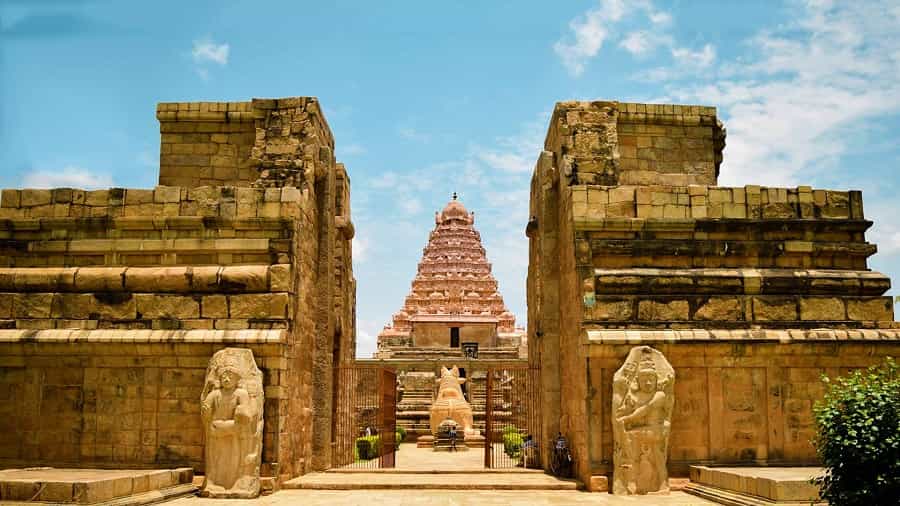
Built during the rule of Chola Empire in South India, this Group of Temples portrays the immense creativity and Skills of Chola Architects. This Heritage Site includes 3 important Temples named The Brihadisvara Temple, The Airavatesvara Temple and the Temple of Gangaikonda Cholapuram.
The temples are said to be Living Temples as the rituals and festivals performed by people several years ago still held here. The Great Living Chola Temples are the finest example of Preserve Heritage of Art and Architecture in India.
Mahabodhi Temple Complex, Bodhgaya – Bihar
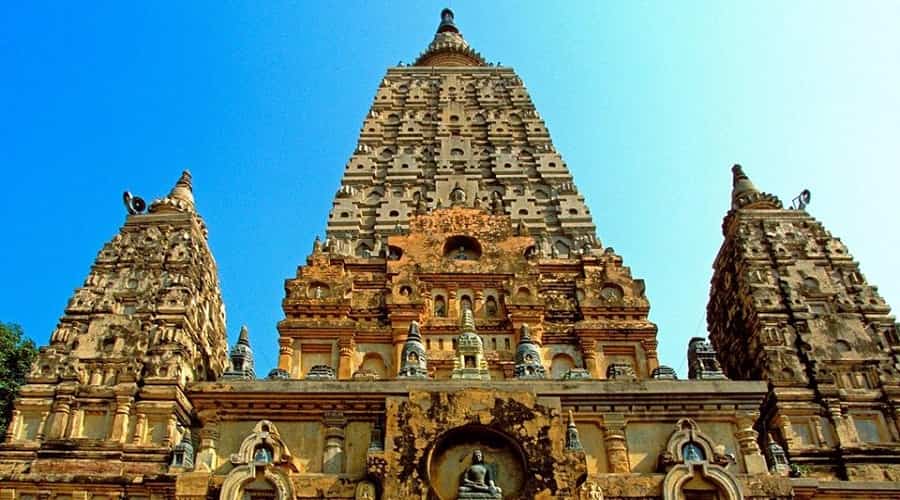
Mahabodhi Temple Complex is a UNESCO World Heritage site associated with the life of Lord Buddha and is one of the most sacred sites for Buddhist Pilgrims in India. There is a Holy Tree (The Bodhi Tree) which is believed to be the place where Siddhartha Gautama attained Enlightenment and became Gautam Buddha.
The Mahabodhi Temple Complex comprises of a 50m high Bodhi Temple, The Holy Bodhi Tree, The Vajrasana and Six other sacred sites. As the place is associated with the Enlightenment of Buddha, the place is also known as the “Land of Enlightenment”.
Ajanta Caves – Maharashtra

Ajanta caves are one of the most important Heritage Sites in India famous for its Rock-Cut Cave Monuments, Temples and Monasteries. The Site consists of 30 Beautiful Cave Monuments date back from 2nd Century BCE to 650 CE.
The Ajanta Caves showcases the diverse Buddhist Traditions carved into a Wall of Rock that is 250 feet in height. There are many Worship Halls and Monasteries in the Caves along with the Painting and Sculptures depicting the rebirths and Past lives of Buddha.
The Caves also exhibits the Rock-Cut Sculptures of many Buddhist Deities and Pictorial representations of Aryasura’s Jatakamala. Ajanta Caves are the very First Heritage Site to be listed under UNESCO World Heritage Sites.
Fatehpur Sikri – Uttar Pradesh
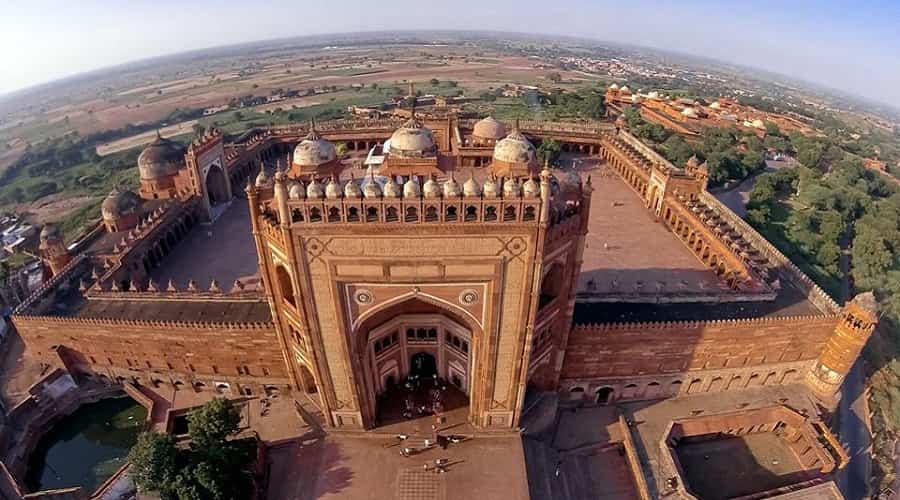
As the name indicates, Fatehpur Sikri is a Heritage Place that portrays the Victory (Fateh) of Mughal Emperor Akbar over Ranthambore and Chittor Kingdoms of Rajput Kings. Built by Akbar in Honour of great Sufi Saint Salim Chisti, Fatehpur Sikri is an ancient Walled City with a series of beautiful Structures like Royal Palaces, Courts, Harem, a Mosque and other Utility Buildings.
The Site is also famed as the Birthplace of Navaratnas of Emperor Akbar – Raja Birbal, Raja Todar Mal, Tansen, Faizi etc.
Important Monuments at Fatehpur Sikri – Tomb of Salim Chisti, Buland Darwaza, Jama Masjid, Diwan-i-khas, Diwan-i-Aam, Ibadat Khana, Panch Mahal, Hiran Minar, Birbal’s House.
Agra Fort – Uttar Pradesh
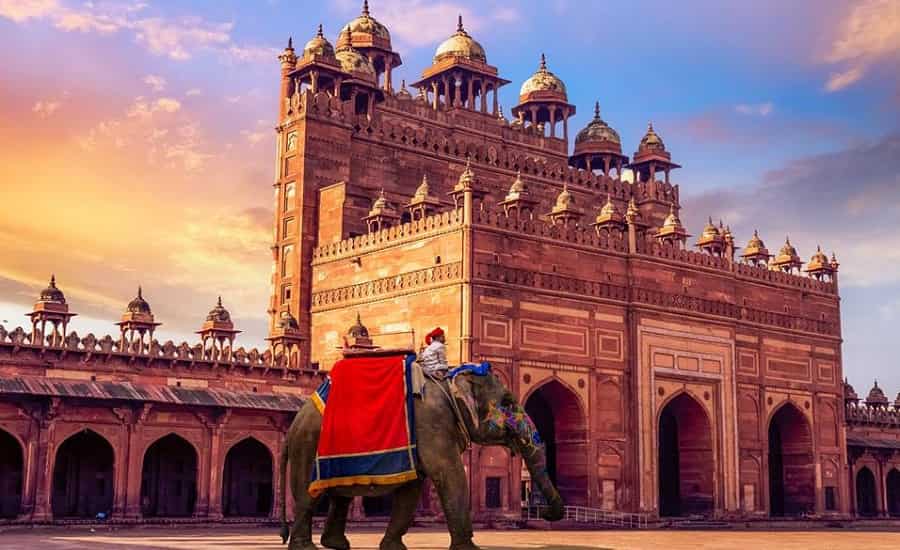
Renowned as the Sister Monument of the famous Taj Mahal, Agra Fort is located near to Taj Mahal on the right bank of Yamuna River. The Fort is a fine structure made of Red Sandstone and once was the Main Residence of some Great Emperors of Mughal Dynasty. With a Blend of Persian, Timurid and Ancient Indian Architecture, Agra Fort is one of the Most Beautiful Mughal Forts In India.
Important Monuments in Agra Fort – Jahangir Palace, Diwan-e-Khas, Diwan-e-Aam, Sheesh Mahal, Moti Masjid and Delhi Gate.
Ellora Caves – Maharashtra
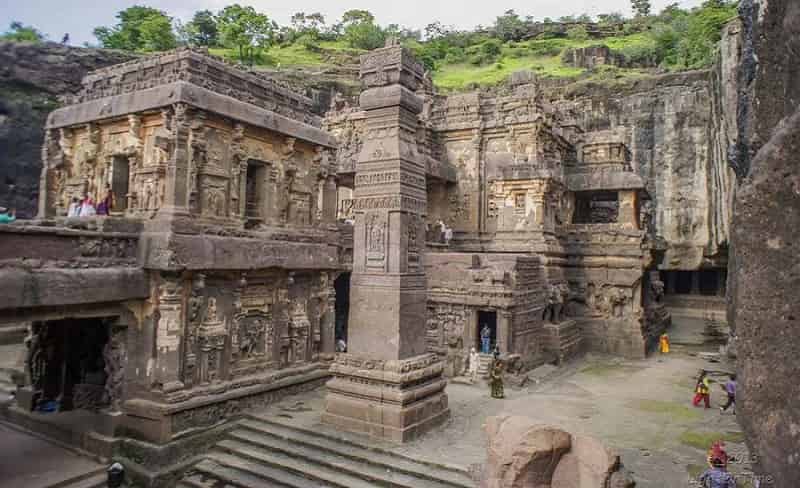
Famous World-Wide for its Rock-Cut Indian Architecture, Ellora Caves are located 30 km from Aurangabad in the State of Maharashtra. The Caves represents art work and monuments of Hinduism, Buddhism, and Jainism from the period of 600-1000 CE. Among the 100 Caves that are present in this Area, 34 Caves can be accessed by the general public.
Now a UNESCO Heritage Site of Archeological Importance, Ellora caves once served as Temples for Hindu Prayers, Monasteries for Buddhist Monks and the Resting place for the other Pilgrims. Most popular cave in Ellora is Cave 16, which is a Chariot Shaped Monument (Kailasa Temple) excavated from a single monolithic Rock and is largest of its kind in the World.
- Must Read: Famous Caves in India
Elephanta Caves – Maharashtra

Located on the Elephanta Island in the Arabian Sea, Elephanta Caves are a popular Heritage Site in India at a distance of 10 km from Gateway of India, Mumbai. The Caves are the representation of Art and Architecture from the Medieval India. There are two groups of Caves in Elephanta Island- One is a small group of 2 Buddhist Caves and other is the large group of 5 Hindu Caves.
The Rock-cut Art and Sculptures in the Hindu Caves mainly depicts the power of Lord Shiva as Creator and also the destroyer of this Universe.
Cave 1 or the Shiva Cave is the most important among the Elephanta Caves and represents the Shaiva Hindu Sect through several rock-cut Sculptures of Hindu Deities.
Capitol Complex – Chandigarh
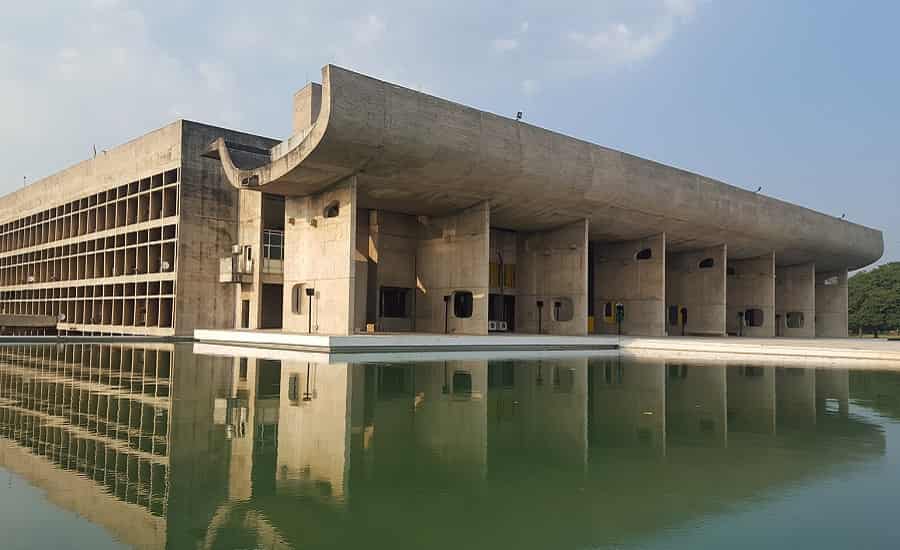
Recently added to the list of UNESCO World Heritage Sites in India, Capitol Complex in Chandigarh is a fine example of Le Corbusier’s (a Popular Franco-Swiss Architect) Architectural Works in various parts of the World.
Also known as the City Beautiful, Chandigarh is the first planned city of India constructed under the guidance of Le Corbusier and Capitol Complex is the Prime Demonstration of his finest Planning and Architectural Work.
Important Structures/Monuments in Capitol Complex – Legislative Assembly, Punjab and Haryana High Court, an Open Hand Monument, Geometric Hill, Secretariat and Tower of Shadows.
Chhatrapati Shivaji Maharaj Terminus – Maharashtra
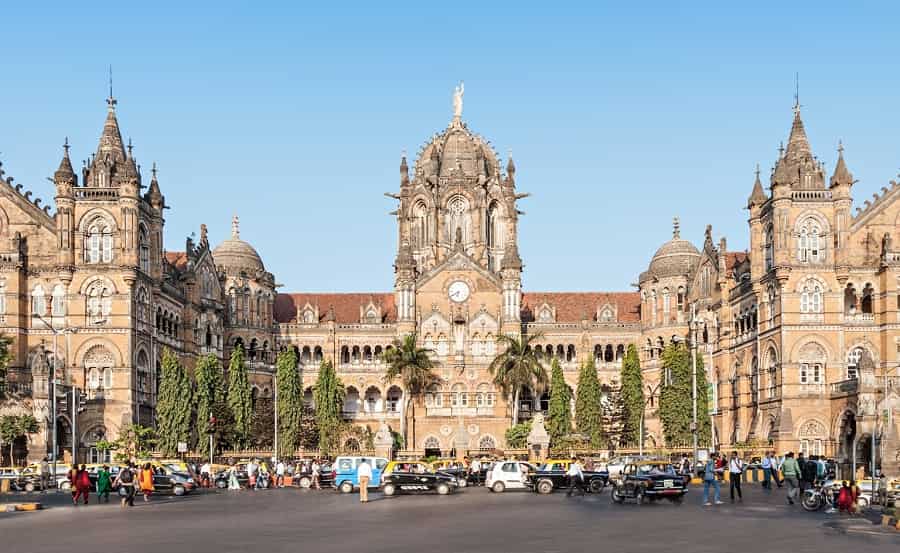
Previously known as Victoria Terminus, Chhatrapati Shivaji Maharaj Terminus is a Historic Railway Station in Mumbai and serves as the Headquarters of the Central Railways in India.
Built in 1887 by Frederick William Stevens, this beautiful building showcases the perfect blend the Mughal Architecture along with Victorian Italianate Gothic Architecture.
The Station is one of the largest and Busiest Railway Stations in India, the Site requires more work and care in order to Preserve the Heritage and Prestige of our Country.
- Must Read: Popular Places You Must Visit in Mumbai
Archeological Site of Nalanda Mahavihara – Bihar
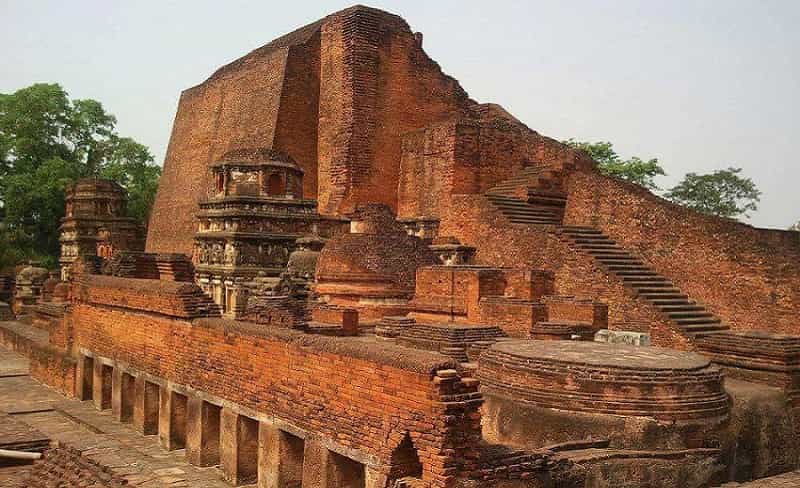
Another recent addition to the UNESCO World Heritage Sites in India, Nalanda Mahavihara was a large Buddhist Monastery and a Centre of learning from 3rd century BCE to the 13th century CE. The Heritage site includes Shrines, Stupas, Viharas (Educational and Residential Buildings) and represents the great artwork in Metal, Stone, and Stucco.
This Historical site testifies the expansion of Buddhism into a religion and the flourishing of Educational and Monastic Traditions.
Mountain Railways of India
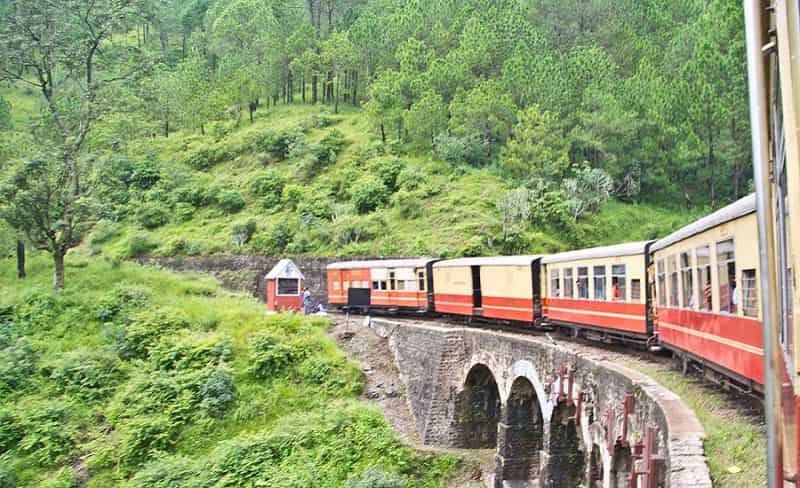
The Mountain Railways of India comprise of three Railways – The Kalka-Shimla Railway, The Nilgiri Mountain Railway, and The Darjeeling Himalayan Railway. All of these three Railways are a fine example of native and courageous engineering solutions to establish a Rail link in the Rugged Terrains of the Beautiful Mountains.
The regions to which these railways associated as The Nilgiri Mountains, The Darjeeling Himalayas and The Hills of Shimla are one of the Most Popular Holiday Destinations in India. And the existence of these Heritage Railways adds an extra charm to these destinations.
These Railways were built in 19th and early 20th century is a Real Jewel in the Heritage of India and all of three are Fully Operational till now.
Natural Heritage Sites in India
The Great Himalayan National Park – Himachal Pradesh
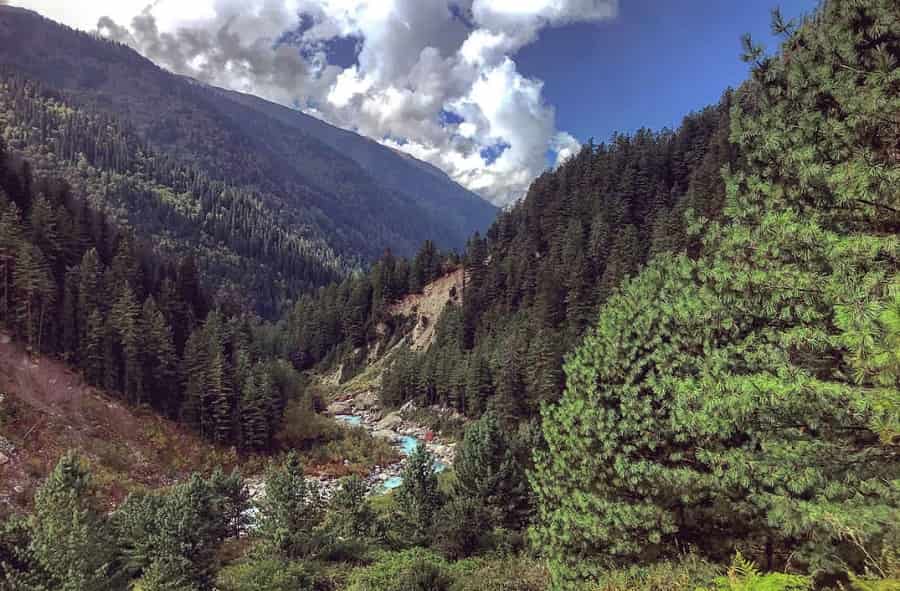
Starting right from the Great Himalayas, The Great Himalayan National Park is one of the most Spectacular and Scenic National Parks in India.
Located in the Kullu District of Himachal Pradesh, the Park is home to a wide variety of Himalayan Wildlife. Packed with Snow Covered Mountains, Gushing Streams, Dense Coniferous Forests and Gigantic Glaciers, GHNP spreads over an area of 1151 Sq. km. GHNP is home to near about 375 species of fauna along with some Rare Species of Himalayan Plants and Herbs.
Snow Leopard, Himalayan Tahr, Himalayan Brown Bear, Blue Sheep and Musk Deer are some of the Rare and Endangered species of the park. The Altitude of Park varies between 1500 m to 6000 m, offering Mesmerizing Views of Varied Landscapes. GHNP is also a great Destination for Adventure Activities like Trekking, Hiking, and Camping, but one should take proper permission from Government Authorities before entering the Park.
Sundarbans National Park – West Bengal
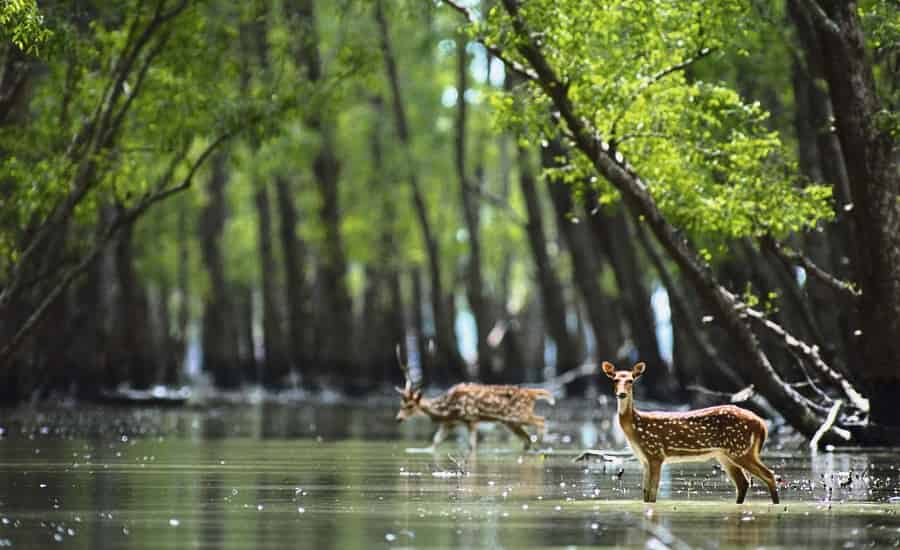
One of the Oldest National Park in India, Sundarbans Biosphere and Tiger Reserve is the perfect place to spot the Biodiversity in the largest Mangrove Forest in the World. The Sunderbans National Park is home to the largest number of Royal Bengal Tigers in World.
Apart from Tigers, many other endangered species can be found here, including Reptiles, Aquatic Mammals, and Birds. The Gangetic Dolphin, River Terrapin, Saltwater Crocodile, Hawksbill Turtle and Horseshoe Crab are some of the Endangered Species of this national park.
The Sundarbans National Park is one of the most important Natural Heritage Sites in India and has a Unique Ecosystem that cannot be found anywhere else in India. Due to the high frequency of encounters with local people of the area, some of the Tigers in this reserve are also known for being “Man-Eaters”.
Keoladeo National Park – Rajasthan
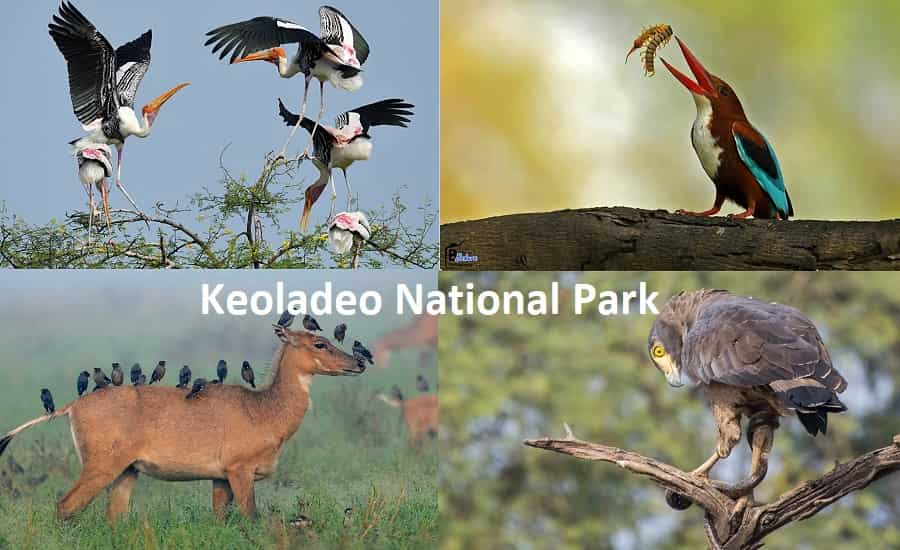
Keoladeo National Park is a UNESCO World Heritage Site in the Bharatpur region of Rajasthan. Also known as Bharatpur Bird Sanctuary, the place is a mixture of Dry Grasslands, Woodland Swamps, Wetlands and Woodlands is home to many rare and endangered species of birds. The reserve is a favorite nesting and wintering ground for thousands of Migratory Birds who came here every year during the hibernal season. Along with 375 species of Birds, the park is home to a variety of Flora and Fauna. A perfect destination for Bird Watching and Nature Photography, Keoladeo National Park is one of the Best Bird Sanctuaries in India.
Some Rare and Endangered Species of Birds in the Park – Painted Stork, Indian Saurus, Great Egret, Eurasian Spoonbill, Crested Serpent Eagle, Darter and much more.
Kaziranga National Park – Assam

Known as the home of the largest population of the One-Horned Rhinoceroses in the World, Kaziranga is one of the best wildlife sanctuaries in India. Situated in the Indian state of Assam, Kaziranga National Park offers one of the most beautiful natural landscapes in the World. The Park is a vast expanse of Marshland, tall Elephant Grass, and Dense tropical broadleaf forest with many small water bodies and four rivers flowing through it, including the Brahmaputra. Apart from One-Horned Rhinoceroses, Kaziranga is home to a large population of Wild Water Buffalo, Tiger, Swamp Deer, Elephants, Leopard, Sloth Bear, and several species of Endangered Birds.
Nanda Devi and Valley of Flowers National Park
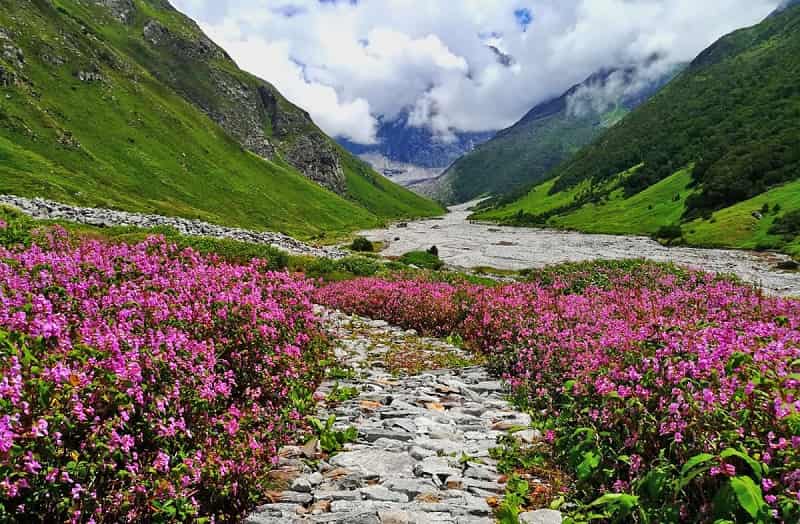
Nanda Devi and Valley of Flowers National Park are two adjacent mountainous regions renowned worldwide for its Outstanding Natural Beauty. Valley of flowers is famous for its fascinating meadows of endemic alpine flowers while Nanda Devi is famous for its lofty snow-capped Himalayan peaks, and together they encompass an exceptional transition zone. Both these areas are well praised by the Botanists and Mountaineers from a long time and also holds a special place in the Hindu Mythology.
More than 700 species of Flora and 500 species of Fauna can be spotted at this World Heritage Site, which makes it one of the best destinations in India for Wildlife lovers. The Site is also a unique place for adventure activities like Trekking, Hiking, and Camping etc.
Manas Wildlife Sanctuary – Assam
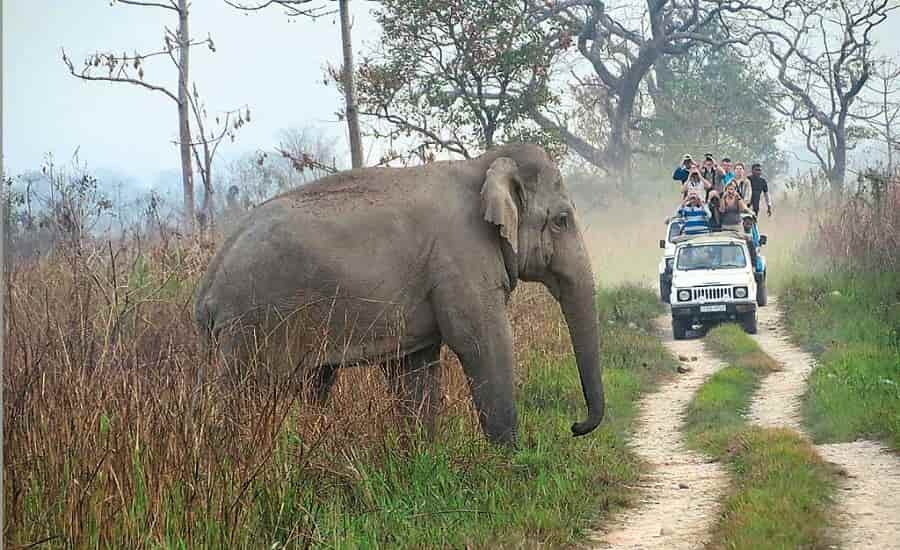
Manas Wildlife Sanctuary is a Biodiversity Hotspot located in the Himalayan foothills in the state of Assam. The Park gets its name from the Manas River, which is flowing through the beautiful landscapes of the park. Recognized for its rich Biodiversity, Manas Wildlife Sanctuary is one of the important UNESCO World Heritage Sites in India contributing to preserving the Natural Heritage of India on a larger scale.
The park provides a vital habitat for several endangered species, including One-Horned Rhino, Tiger, Swamp Deer, Bengal Florican, Hispid Hare, Assam Roofed Turtle, Golden Langur and Pygmy Hog.
Western Ghats
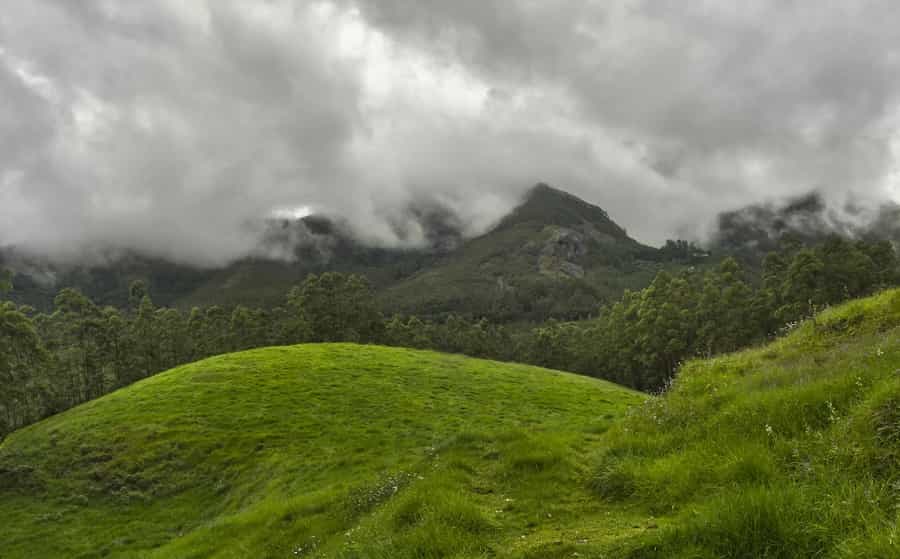
The Western Ghats are one of the most popular and important natural Heritage Sites in India, which spreads over 1600 km from Konkan to the Malabar Coast of India. The Western Ghats are a chain of mountains and hills and constitutes several Biosphere Reserves, National Parks and Wildlife Sanctuaries in Maharashtra, Karnataka, Kerala and Tamil Nadu states of India. These Mountains are believed to be older than the Himalayas and present the finest examples of the Monsoon system on Earth.
Having an extraordinary level of endemism and biological diversity, this chain of mountains is recognized as one among the 8 “Hottest Hotspots” in the World.
The Heritage Site is home to several endangered species which includes 229 species of plants, 31 species of Mammals, 43 species of amphibian, 15 species of Birds, and 5 species of reptiles.
The Western Ghats are a popular Hotspot among Adventure Enthusiasts as they are home to some of the best Trekking and Hiking Trails in South India.
Mixed Heritage Sites in India – Cultural/Natural
Khangchendzonga National Park – Sikkim
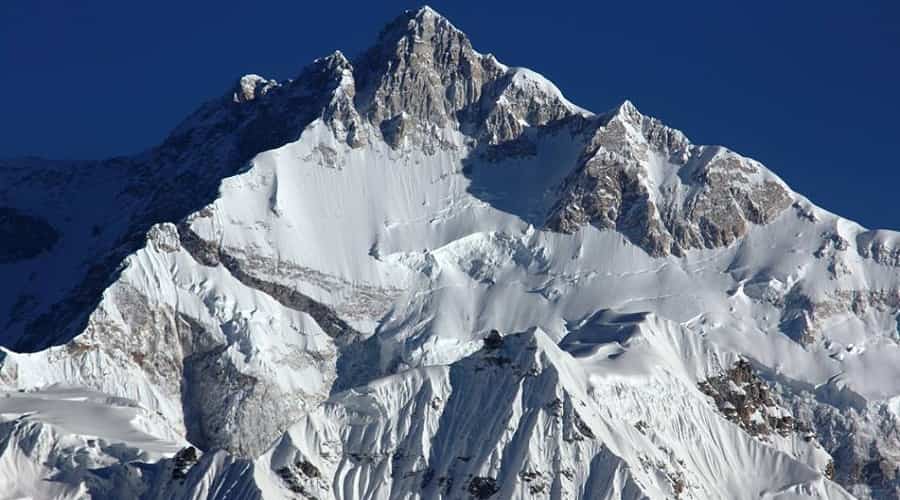
Previously known as Kanchenjunga National Park, Khangchendzonga is the latest entry into the UNESCO World Heritage Sites in India. Located amidst the Himalayan Ranges of West Sikkim, the site is a unique mixture of the diversity of plains, lakes, valleys, glaciers, dense forests and snow-covered mountains including the world’s third highest mountain peak – The Khangchendzonga.
Several mythological beliefs and stories are associated with this region and the natural elements present here like Lakes, Rivers, and Caves are objects of worship to local people from the old times.
Several Sacred and mythological places such as Monasteries, Gompas, Shrines and other places of worship are located inside the protected area, which makes it a Heritage Site of both Natural and Cultural Importance.
The national park is one of the highest altitude national parks in the World and exhibits some of the rarest species of Himalayan Wildlife. Several rare Himalayan Floral species, shrubs, and medicinal herbs are also found in this beautiful protected area.
Spread over an area of 850 sq. km, the altitude of the park ranges from 1830m – 8550m that forms a unique ecosystem and offers some of the most breathtaking views on the earth.
Above is the list of all the UNESCO World Heritage Sites in India that you should visit to have a glimpse of Cultural and Natural Heritage of India. Do Share and Like this post on your favorite social media portals and let others know about these Heritage Sites in India.
FAQ
1- How many UNESCO World Heritage sites are there in India?
As of 2021, there are 38 UNESCO World Heritage sites in India.
2- What are some of the most famous UNESCO World Heritage sites in India?
Some of the most famous UNESCO World Heritage sites in India are the Taj Mahal, Ajanta and Ellora Caves, Hampi, Red Fort, Khajuraho Temple, and the Sun Temple at Konark.
3- How does UNESCO determine which sites become World Heritage sites?
UNESCO considers a site for World Heritage status if it meets criteria set out in the World Heritage Convention. These criteria include cultural and/or natural significance, authenticity, and the ability to maintain the site’s integrity over time.
4- What is the process for a site to become a World Heritage site?
A site can become a World Heritage site if it is nominated by its country and if the nomination is approved by the World Heritage Committee after a comprehensive evaluation process.
5- Can a site lose its World Heritage status?
Yes, a site can lose its World Heritage status if it no longer meets the criteria for which it was inscribed or if it is threatened by development or other factors.
7- What benefits does a site receive after being inscribed as a World Heritage site?
Sites that are inscribed as World Heritage sites receive international recognition and are considered to be of outstanding universal value. They also benefit from increased tourism, protection, and conservation efforts.
